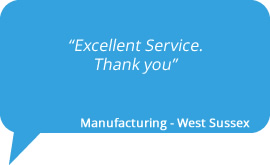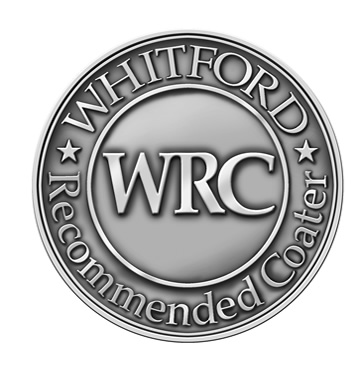
The only way of choosing the correct coating system for a particular application comes from many years of experience and a thorough knowledge of our industry. The importance of this part of our service cannot be underestimated. We pride ourselves in being able to present fast, informed, creative solutions to our customers so that problems can be solved quickly and efficiently.

We will not present a large selection of samples for you to spend unnecessary time and resources testing. Let us know what the problem is and we will normally be able to suggest the correct system, based upon our wealth of knowledge and experience.
Knowledge and experience are crucial but being able to listen, ask the right questions and then interpret the gathered information into an effective solution is equally important.
We are able to support such a wide range of options by keeping a close working relationship with Whitford, who manufacture a substantial range of fluoropolymer coatings under the brand Xylan® and DuPont who manufacture the Teflon® range of coatings.
Working closely with Whitford and DuPont gives us the opportunity to keep abreast of the latest developments in coating technology as well as the chemistry behind the coating formulations and a level of technical support that is second to none. Data from tests such as salt spray, taber abrasion, static and dynamic friction values, bead contact angle, permeation and many other industry standard tests is always on hand to support our decision making process.

It is a common misconception that Teflon® is an individual, specific coating. The strength of the Teflon® brand has been a huge benefit to DuPont but even within the range of Teflon® finishes, there are dozens of choices of coating system, including single layer, two layer and three layer variants. The same applies to the Xylan® range of coatings from Whitford, who have the largest range of fluoropolymer coatings. Some are PTFE based, some FEP and some PFA. Different resin systems are also used, such as PAI (polyamide-imide), PPS (polyphenylene sulphide) and in some cases epoxy and there are also polyurethane based systems that are used, particularly in coatings designed for flexible substrates. PPS (polyphenylene sulphide) is also available as a standalone coating system for unrivalled protection against solvents and also with added PTFE where additional low friction or non stick properties are required.
Some coating systems have additives or fillers to achieve specific properties. Phosphates may be present to give corrosion protection. Ceramic or metallic powder can be added to give abrasion resistance or electrical conductivity. Where additional dry lubrication or high load/bearing properties are required, molybdenum disulfide (MoS2) or graphite can be added. Aesthetic properties can be achieved by adding organic pigments to give colour. Aluminium powder can be added in some silver coatings and mica (a mineral) can be added to give a ‘sparkle’ effect to the coating – commonly used on domestic cookware products.
The ratio of fluoropolymer to resin can also be increased in different coating systems to give improved low friction or non stick properties or at the opposing end of the scale, the resin content can be increased to improve abrasion resistance, hardness and adhesion where surface preparation is an issue.
There are many instances where coatings need to be suitable for food contact and there is a wide range of coatings that are available for this purpose. It is important to understand which coatings can be used in such applications. Where a coating system needs to be compliant with food contact regulations, a Regulatory Compliance Statement can be obtained from the coating manufacturer.
Although many materials can be coated, it is important to understand the limitations of certain substrates. Almost all of our coating systems require some form of curing cycle. Temperatures can range from air drying (ambient) coatings, to the high performance systems that need to be cured at up to 425⁰c. The substrate material needs to be able to withstand the curing temperature and certain materials can be affected by high temperatures. Special considerations and additional processes may be required for some alloys with a high copper content and other materials that have had plating pre-treatments such as Alochrom, anodising or phospating for ferrous materials.
These are just some of the variables that need to be carefully considered to reach the most effective solution – a result of our knowledge, experience and unrivalled focus on customer satisfaction.
